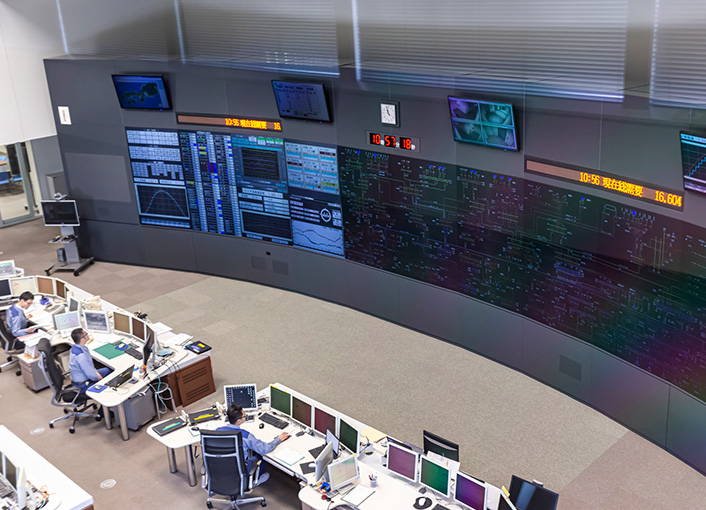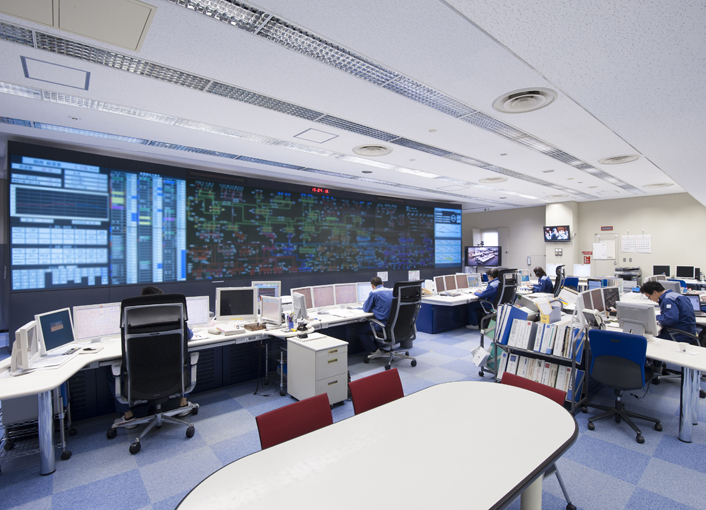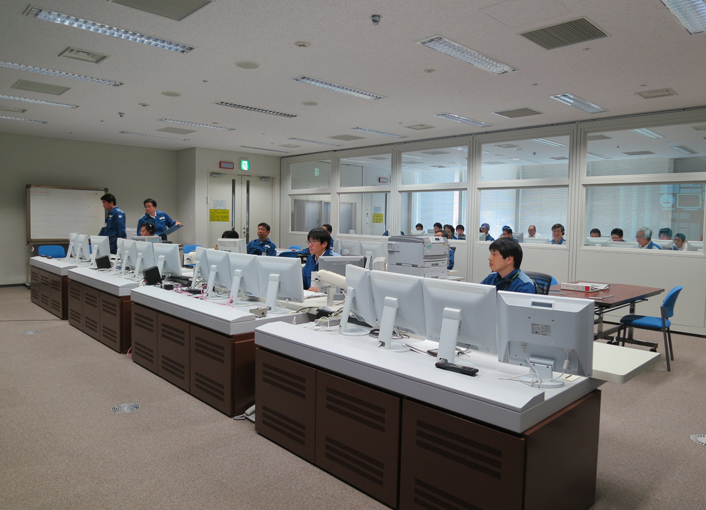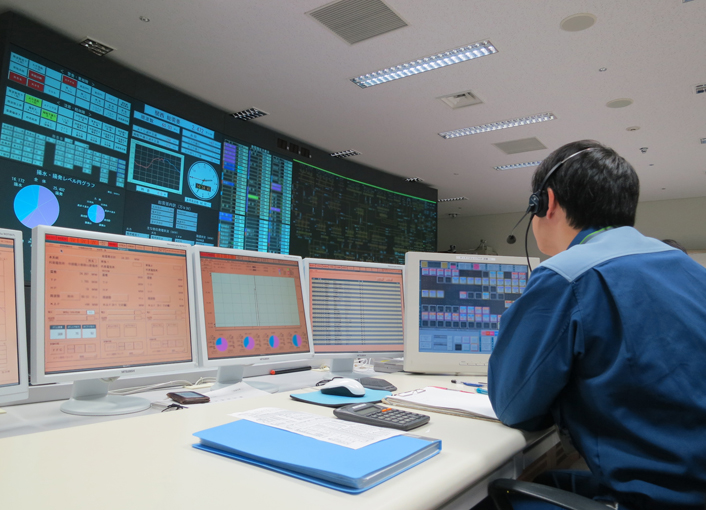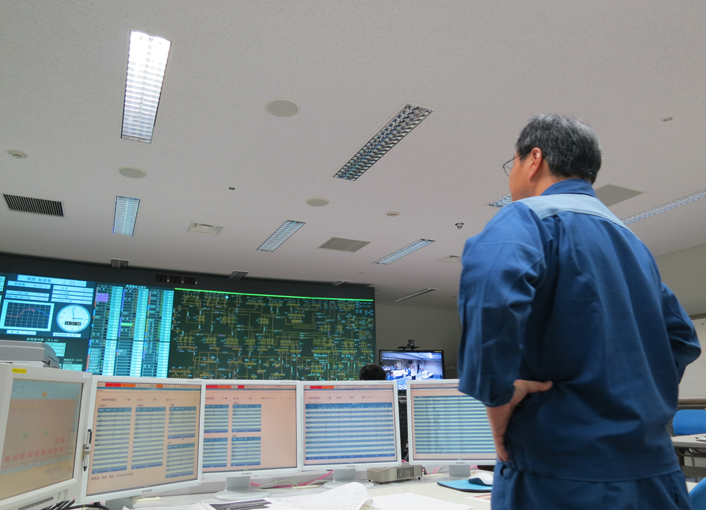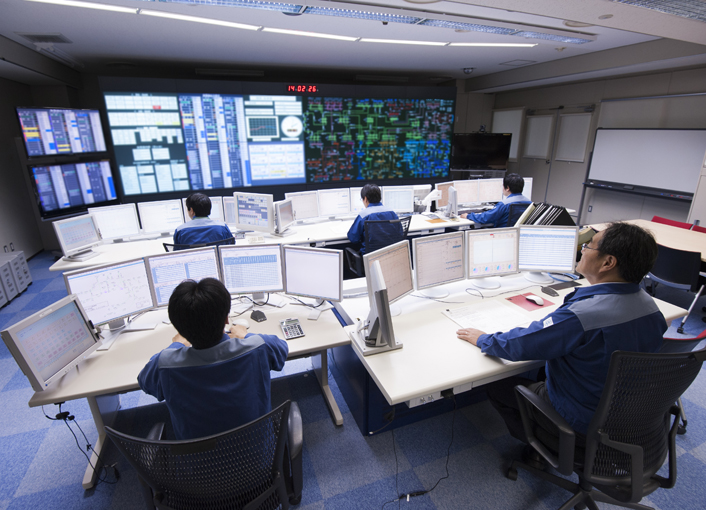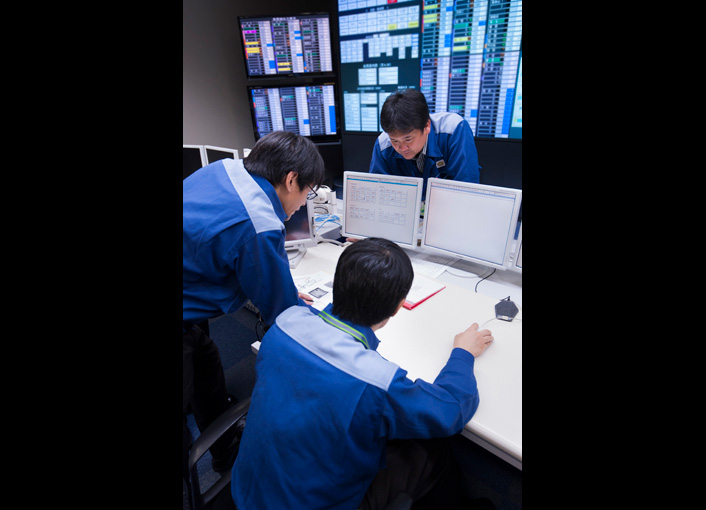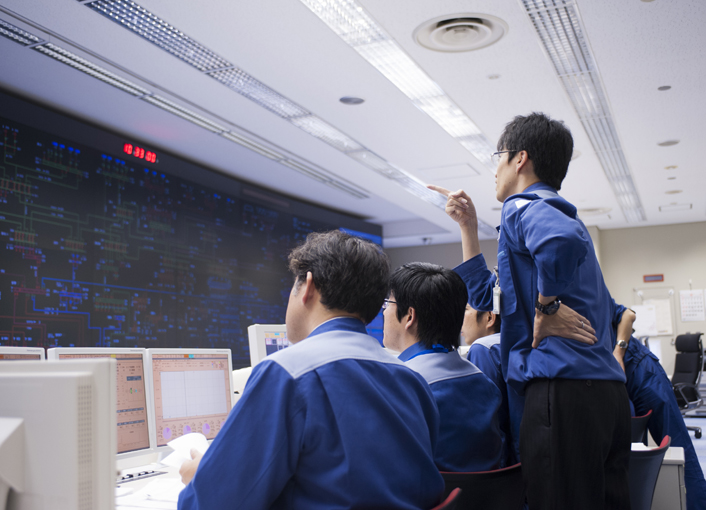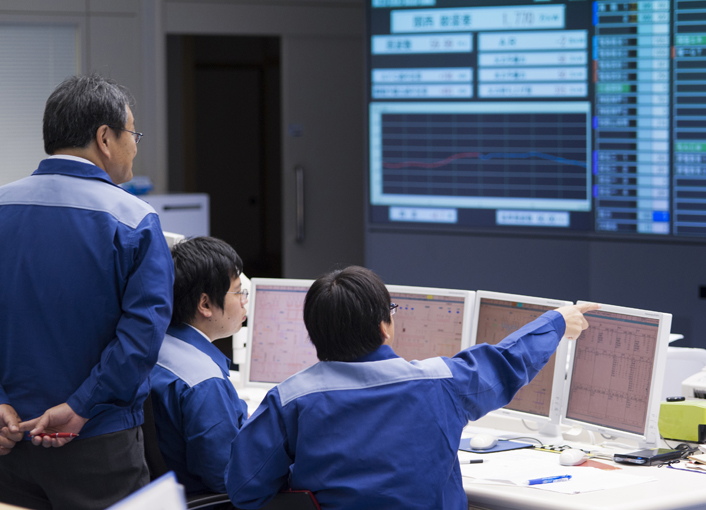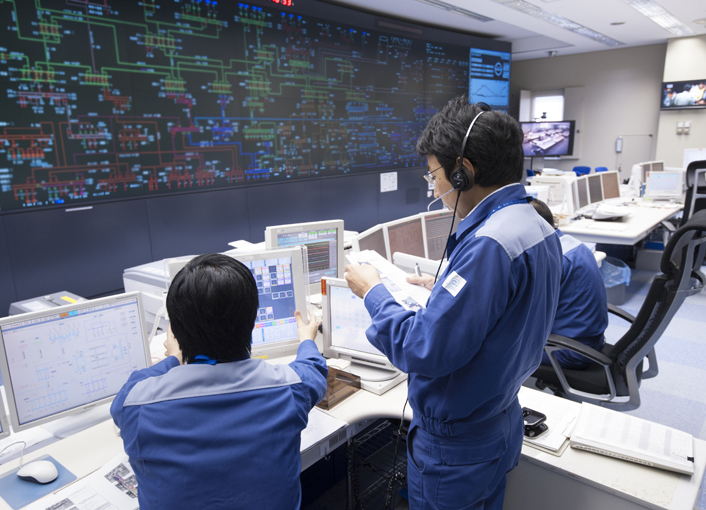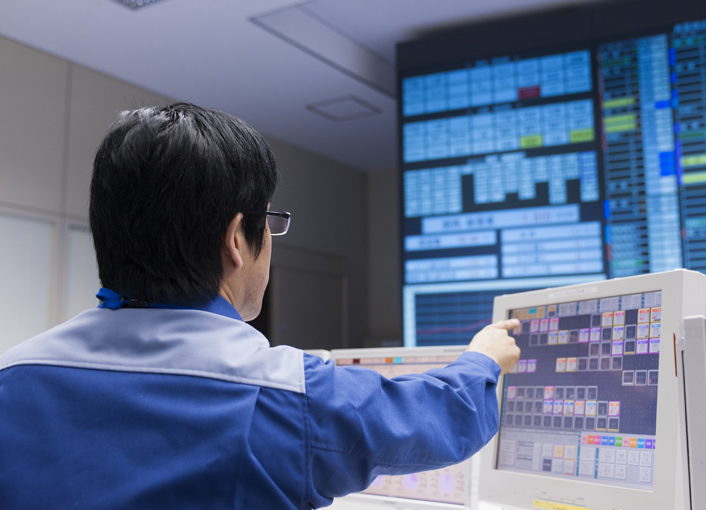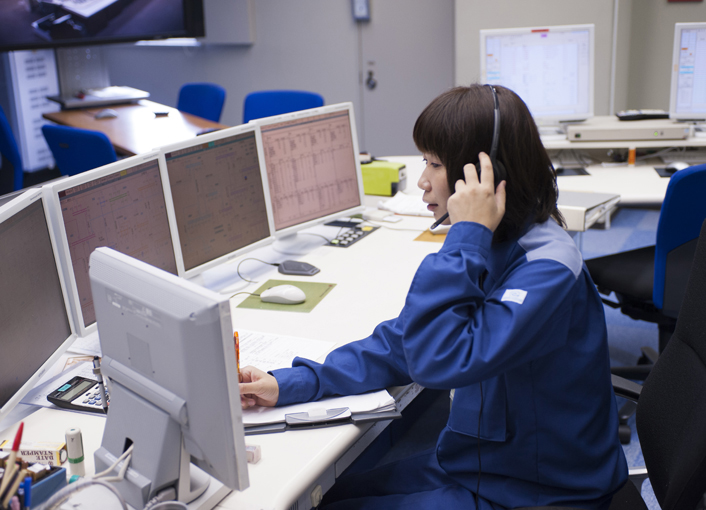Two Pillars of Control

Ensuring stability of the two pillars of control
Two facilities oversee load dispatching operations responsible for delivering high-quality electricity to customers on a stable basis by controlling electric power 24 hours a day, 365 days a year. The first facility, the Central Load Dispatching Center, is responsible for maintaining a balance between electricity generation and consumption (supply and demand operations). ![]() The second facility, the Primary Dispatching Center, is responsible for maintaining the electricity flow pathways (power system operations).
The second facility, the Primary Dispatching Center, is responsible for maintaining the electricity flow pathways (power system operations).![]()
At the divisions responsible for stable power supply under the control of the Central Load Dispatching Center and the Primary Dispatching Center, employees take part in various training programs on a regular basis to ensure accurate and prompt response in the event of an emergency.
Striving for swift recovery in the event of an accident
Accident restoration training using simulators is conducted to keep and enhance the technical capabilities of employees for prompt and accurate actions in the event of an accident due to a natural disaster.
At the end of October, three rounds of large-scale accident restoration training sessions were conducted with a large number of participants from nuclear power plants and thermal power plants as well as branch dispatching control offices responsible for keeping the electricity flow pathways, and the Primary Dispatching Center.![]()
![]()
The training drill assumed a lightning strike had caused a major power supply shutdown and outages over a wide area.![]()
![]()
All participants tackled the drill as a single team with a strong dedication to resuming power supply as quickly as possible while facing pressure to understand the overall status of the accident, to figure out solutions in consideration of the status, and to give accurate instructions quickly.
Lightning strikes account for about 80% of all causes of power system accidents (according to fiscal 2012 records). With this fact in mind, we make every effort to mitigate the impact of lightning, and to train regularly for responding to accidents.
A consistent supply of electricity, always
The Central Load Dispatching Center (located in Osaka prefecture) and the Primary Dispatching Center (located in Kyoto prefecture) work closely together by merging and linking mutual power systems to locate load dispatching centers in a distributed way.![]()
To build a mutual backup system that enables seamless operation without having to exchange employees, functions are shifted from one center to the other in the event that one system goes down or a disaster hits a specific center.
Employees of both centers participate in training on a regular basis to ensure a thorough understanding of alternate roles in the other office to maintain stable power supply in the event of an emergency.
Mutual backup training to reinforce the roles of each facility
The Central Load Dispatching Center and the Primary Dispatching Center conducted five rounds of mutual backup training in October.
In the most recent drill, a disaster due to an earthquake or fire causing a system failure was assumed. Employee roles were then switched so that the employees of the Central Load Dispatching Center engaged in power system operations while Primary Dispatching Center employees engaged in supply and demand operations.![]()
![]()
At around noon—when the amount of power usage fluctuates the most in a day—all the employees were under immense pressure![]() and voices giving instructions to power plants were marked by phrases such as, "Frequency increasing! Parallel off the generator!" and "Generator paralleling off. OK.", all while the ringing sounds of the equipment marked the adjustment of output at the power plants.
and voices giving instructions to power plants were marked by phrases such as, "Frequency increasing! Parallel off the generator!" and "Generator paralleling off. OK.", all while the ringing sounds of the equipment marked the adjustment of output at the power plants.![]()
Employees are continuing their efforts through training to learn system operations and to maintain and enhance the expertise and skills necessary for backup tasks.
Practical training for practical operations
he Central Load Dispatching Center and the Primary Dispatching Center—both essential electricity control centers—are devoted to ensuring stable power supply. Accident restoration training and mutual backup training for when the system goes down or a natural disaster occurs is designed to cultivate a feeling of focus and calmness through practical exercises that lead to practical operations.![]()
![]()
Safe and Stable Supply Menu


